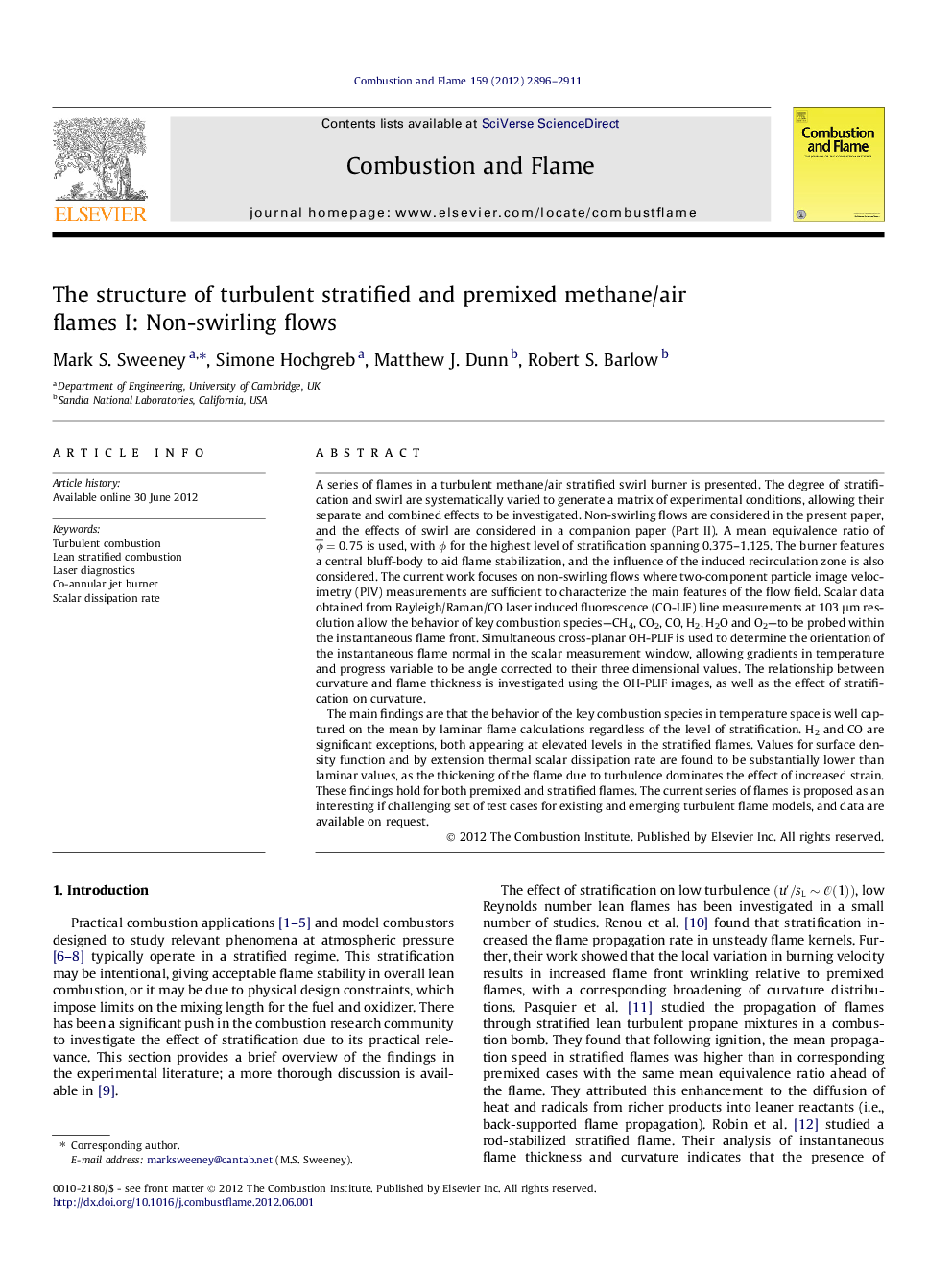| کد مقاله | کد نشریه | سال انتشار | مقاله انگلیسی | نسخه تمام متن |
|---|---|---|---|---|
| 169761 | 458040 | 2012 | 16 صفحه PDF | دانلود رایگان |

A series of flames in a turbulent methane/air stratified swirl burner is presented. The degree of stratification and swirl are systematically varied to generate a matrix of experimental conditions, allowing their separate and combined effects to be investigated. Non-swirling flows are considered in the present paper, and the effects of swirl are considered in a companion paper (Part II). A mean equivalence ratio of ϕ¯=0.75 is used, with ϕ for the highest level of stratification spanning 0.375–1.125. The burner features a central bluff-body to aid flame stabilization, and the influence of the induced recirculation zone is also considered. The current work focuses on non-swirling flows where two-component particle image velocimetry (PIV) measurements are sufficient to characterize the main features of the flow field. Scalar data obtained from Rayleigh/Raman/CO laser induced fluorescence (CO-LIF) line measurements at 103 μm resolution allow the behavior of key combustion species—CH4, CO2, CO, H2, H2O and O2—to be probed within the instantaneous flame front. Simultaneous cross-planar OH-PLIF is used to determine the orientation of the instantaneous flame normal in the scalar measurement window, allowing gradients in temperature and progress variable to be angle corrected to their three dimensional values. The relationship between curvature and flame thickness is investigated using the OH-PLIF images, as well as the effect of stratification on curvature.The main findings are that the behavior of the key combustion species in temperature space is well captured on the mean by laminar flame calculations regardless of the level of stratification. H2 and CO are significant exceptions, both appearing at elevated levels in the stratified flames. Values for surface density function and by extension thermal scalar dissipation rate are found to be substantially lower than laminar values, as the thickening of the flame due to turbulence dominates the effect of increased strain. These findings hold for both premixed and stratified flames. The current series of flames is proposed as an interesting if challenging set of test cases for existing and emerging turbulent flame models, and data are available on request.
Journal: Combustion and Flame - Volume 159, Issue 9, September 2012, Pages 2896–2911